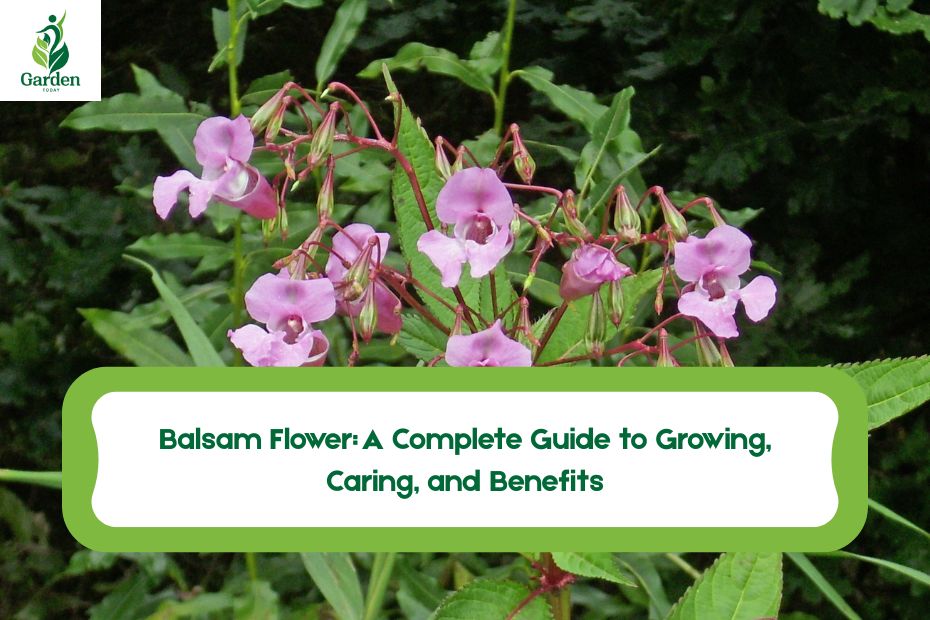The balsam flower, also known as Impatiens balsamina, is a colorful and easy-to-grow plant loved by gardeners. With its bright blooms and low-maintenance nature, it’s perfect for beginners. Whether you want to grow it in pots, gardens, or use it for its medicinal benefits, this guide covers everything about the balsam plant.
What is a Balsam Flower?
The balsam flower (scientific name: Impatiens balsamina) is a popular annual plant. It’s also called garden balsam, rose balsam, or touch-me-not plant because its seed pods burst open when touched. These flowers come in shades of pink, red, purple, and white, making them great for gardens and bouquets.
How to Grow Balsam Flowers
Growing balsam flowers is simple. Here’s how:
1. Choosing the Right Seeds or Plants
You can buy balsam flower seeds online or as young plants from nurseries. Look for healthy seeds or seedlings with no signs of disease.
2. Best Time to Plant
Balsam flowers grow best in warm weather. In India, plant them after winter (February-March) or during monsoon (June-July).
3. Soil and Sunlight Needs
- Soil: Use well-draining, fertile soil.
- Sunlight: They prefer partial shade but can tolerate full sun in cooler climates.
4. Planting Steps
- Sow seeds ¼ inch deep in soil.
- Keep the soil moist but not waterlogged.
- Seeds germinate in 7-14 days.
- Space plants 12-18 inches apart for good growth.
Balsam Flower Care Tips
To keep your balsam flowers healthy:
1. Watering Needs
- Water regularly but avoid overwatering.
- Keep soil slightly moist, especially in summer.
2. Fertilizing
Use organic compost or a balanced fertilizer every 3-4 weeks for better blooms.
3. Pruning and Deadheading
- Remove dead flowers to encourage new blooms.
- Trim leggy stems to keep the plant bushy.
4. Pest and Disease Control
- Common pests: Aphids, spider mites.
- Solution: Use neem oil spray.
- Diseases: Fungal infections (avoid wetting leaves).
Balsam Flower Benefits and Uses
Balsam flowers are not just pretty—they have many uses:
1. Medicinal Benefits
- Skin Care: Helps treat acne, wounds, and eczema.
- Anti-inflammatory: Used in Ayurveda and Chinese medicine.
- Herbal Tea: Made from petals for soothing effects.
2. Decorative Uses
- Wedding bouquets & centerpieces
- Pressed flower art & crafts
- Natural dyes for fabrics
3. Attracts Pollinators
Bees, butterflies, and hummingbirds love balsam flowers, making them great for pollinator gardens.
Balsam Flower Meaning and Symbolism
In different cultures, balsam flowers symbolize:
- Love and patience (Hinduism)
- Prosperity and happiness (Feng Shui)
- Healing and protection (folk medicine)
Common Problems & Solutions
| Problem | Solution |
|---|---|
| Yellow leaves | Overwatering – reduce water |
| No blooms | Needs more sunlight/fertilizer |
| Pests | Use neem oil or insecticidal soap |
Conclusion
The balsam flower is a versatile, beautiful, and beneficial plant. Whether you grow it for its vibrant colors, medicinal uses, or pollinator-friendly nature, it’s a great addition to any garden. With proper planting, care, and maintenance, you can enjoy its blooms all season. Try growing balsam flowers in pots or gardens and explore their many benefits!
Visit Garden Today
